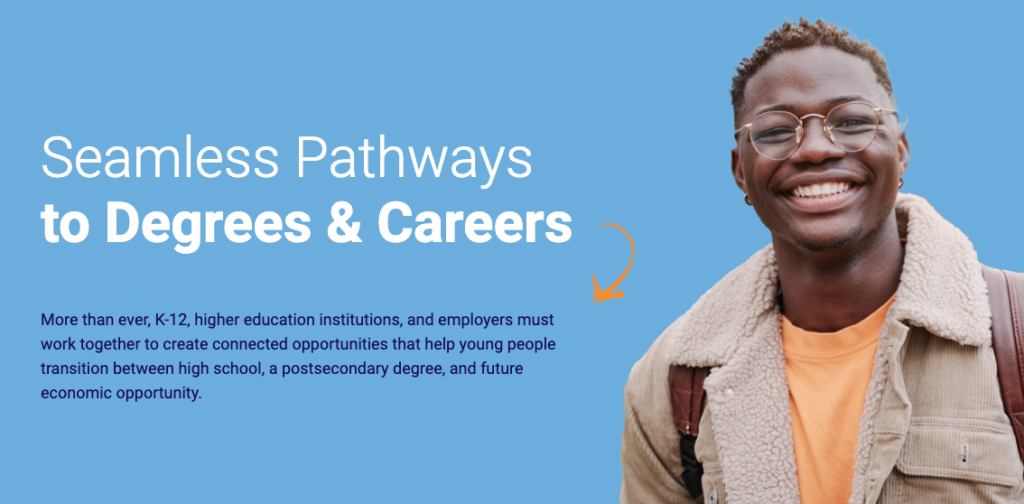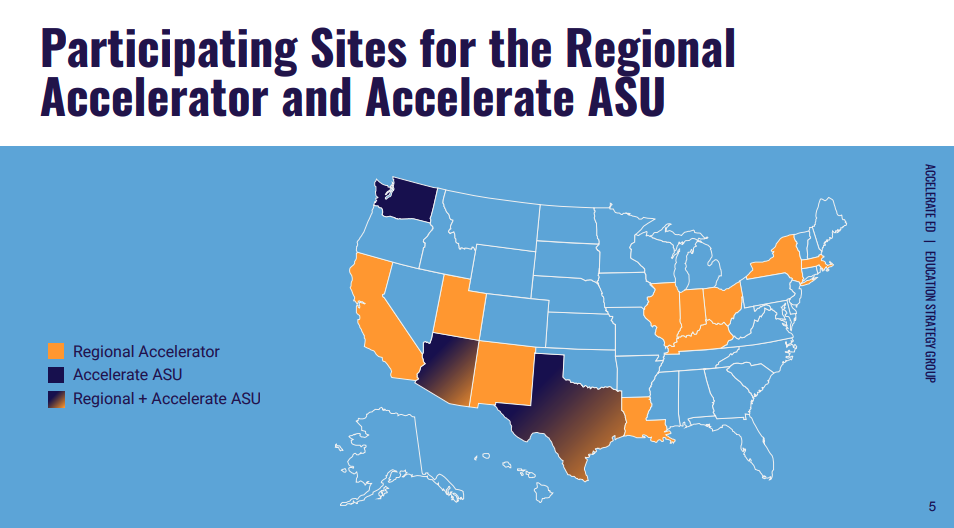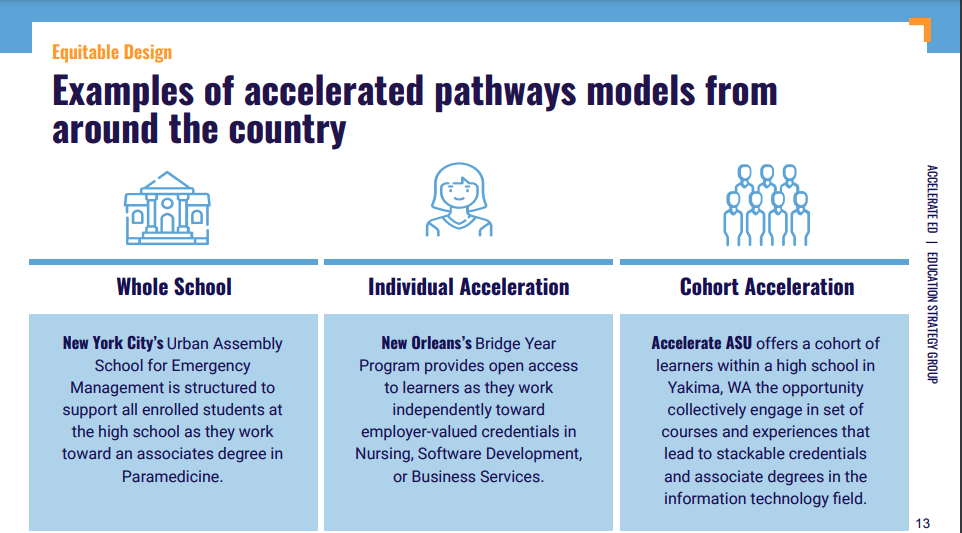Accelerate ED Initiative Creates Opportunities for Students to Excel
Key Points
-
Last year, twelve teams from across the country came together to form the Accelerate ED regional accelerator.
-
Throughout the nine-month design sprint, these teams worked to create a blueprint for expanding access to and understanding of accelerated pathways.

Last year, twelve teams from across the country came together to form the Accelerate ED regional accelerator. Funded by the Bill & Melinda Gates Foundation and supported through a design sprint by Education Strategy Group, the teams consisted of leaders from intermediary organizations, K-12, higher education, the workforce, and student-serving organizations. These design teams observed some of the challenges facing students and the workplace: students need to better understand which workplace opportunities are available to them and what they can do to prepare for them, while many industries are struggling to recruit employees with the requisite skills. To address these challenges, the teams focused on supporting learners, particularly students of color and students from low-income backgrounds, in reaching opportunity and finding success in transitioning to the workforce.
Over the course of the nine-month design sprint, these teams worked to create a blueprint for expanding access to and understanding of accelerated pathways to credentials for high school students, one that would be replicable, documentable and would help these learners earn an associate degree in a high-value field within one year of high school graduation, thereby saving them time and money.

Through this process, the teams took a variety of approaches to build or scale these postsecondary pathways, all with the end goal of providing students valuable workplace experience in high school and helping them navigate a path toward postsecondary opportunities. As stated on the Accelerate ED website teams were focused on “developing equity-driven programs with intentionally sequenced coursework, work-based learning opportunities, and targeted advising and student supports; identifying a set of key enabling conditions around policy, funding, and data that are necessary for scaling these programs; and building the capacity of intermediary organizations and partner organizations to foster alignment across systems.”

One of the key findings from the Lessons Learned Report is that each sector has a role to play in order to effectively implement and scale high-quality and durable accelerated pathways to credentials. Partners need to be clear about roles and vision in scaling this work.
As stated on page nine of the report, some of the typical roles that each sector plays are:
- K-12: serve as the primary point of contact for students and families, helping to ensure that students meet course requirements aligned with the educational and career goals while providing additional advising and wraparound supports.
- Higher Education: offer dual enrollment coursework that is transferable to other institutions and provide navigational support to students.
- Workforce: offer high-quality paid work-based learning opportunities to students and advise educators and institutions on pathway development and skill prioritization.
- Community-Based Organizations: provide a network of support and guidance to help students and their families.
Accompanying this release are snapshot case studies of each design team’s model and additional resources for leaders. The case studies showcase the different approaches each team took to accelerate students’ journeys to higher education and a high-value career; supplementary resources range from policy to community considerations for communities looking to engage in this important work. Industries and students across the country are facing this skills gap, with continued research, design and implementation, we can do something about it.
Accelerated pathways would help these learners earn an associate degree in a high-value field within one year of high school graduation, thereby saving them time and money.
Getting Smart Staff
This report and its supplemental materials is a beacon of hope in the pathways field, showing that the broader ecosystem is shifting to meet the call of “accelerating student paths to a credential with value in the workforce.”
How might we ensure that we go beyond dual enrollment and create true scaffolding and integrated new pathways that combine advising, credits, aligned programs of study, work-based learning and social capital? Accelerate ED offers a range of on-the-ground examples from communities leading the way. Check out the Getting Started Guide for Communities to start similar programs in your community.







0 Comments
Leave a Comment
Your email address will not be published. All fields are required.